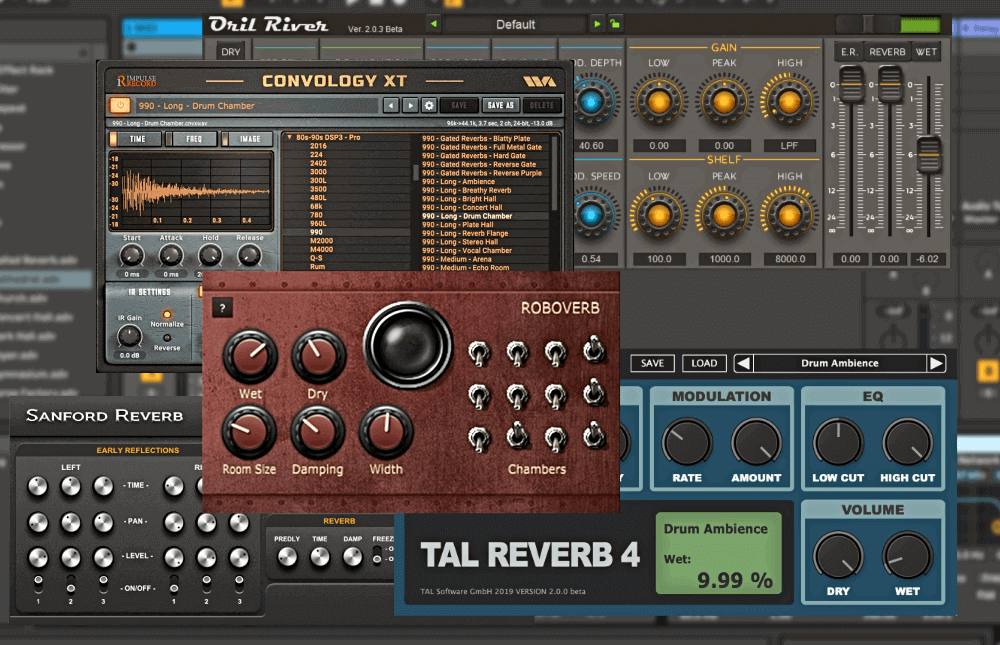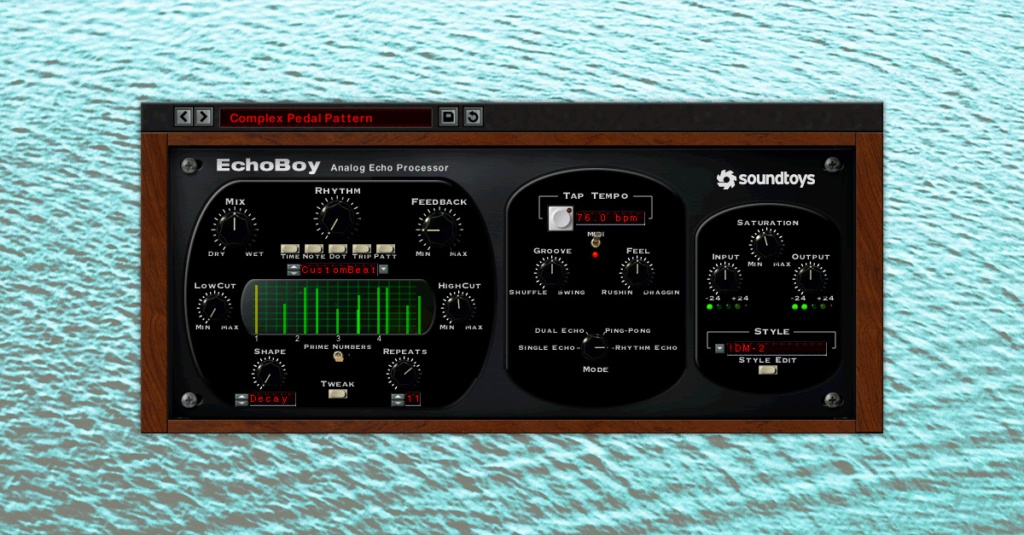

Mod Depth – sets the overall amount for the modulation.This primarily controls the Delay 1+2 pair but also has an impact on the other delay lines. Mod Rate – sets the overall speed for the modulation LFO.If you are finding it hard to get the sound to sit nicely in the mix, this knob may be the solution as too many things being too stereo is “soup”. This is handy when you do not want to add excessive stereo to a sound lest it swamp the mix. Wide – allows to progressively narrow the stereo of the wet signal.Wet – sets the level for the effected signal (balance of echo lines).Dry – sets the output level for the dry (post-Drive) signal.Lo Pass – is a 6db low pass filter that will roll off higher frequencies (treble) to help reduce brightness or enhance warmth.Hi Pass – is a 6db high pass filter that will roll off lower frequencies (bass) to help reduce muddiness or enhance brightness.A little bit will probably bring a nice sparkle, sheen, or presence to your instrument, vocal or bus. This drive is not designed to make you sound like Megadeth but it can get unruly if the input is really LOUD. Use this with care based on the signal for the performance or it will get “crunchy” or “ragged”. Drive – sets the amount that the input is put into saturation or overdrive.


Just be aware that louder always seems better so if unsure if what you are doing is improving that you may need to consider checking overall Input & Output levels using DAW meters that you trust. Overall level can easily grow within this device and this has deliberately been left for the user to manage. Initially that may be a bit confusing but is part of how the unit builds its character – from being less “regular” than typical units. Even then, these levels are very dependent on what comes before them. Only the second and third echo sections have unique level controls. There is a modulation system that is relatively simple with Delay 1+2 but more complex for the other delay lines.This means that with feedback, tone adjustments are cumulative. Tone can be adjusted with a 6db high and low pass filter at the first audio bus.Take care with feedback as larger values can very easily create a feedback loop that will howl until one or both feedback knobs are lowered. Each of the delay sections sends its signal to the Wet Output and can also be fed back into the first bus using standard left & right or the left & right can be reversed for a more complex signal.The 4i version is generated from the offset value which moves the right time shorter or longer than the initial value for a stereo spread. The overall time is set to a short range. Delay 4+4i can also be fed a mix of the initial driven signal and Delay 3.
#Simple delay vst full#
Delay 3 is always set to a full time range which means that it can be longer than Delay 4+4I. Delay 3 can be fed a mix of the initial driven signal and the Delay 1+2 signal.The first setting is for chorus, the second for reverb, third for longer echoes. These delays can be set to very short, short, and long ranges. Signal is on a Bus that initially is sent to the Delay 1+2 which is a stereo pair hard-panned left & right.The reason that it is done this way is that when the driven signal is mixed with the driven+effected signal, the results are far more interesting. This means that HZ Delay can actually be used as a saturation unit with no other features. Signal arrives in the unit via a drive that will add soft distortion to the whole signal.


 0 kommentar(er)
0 kommentar(er)
